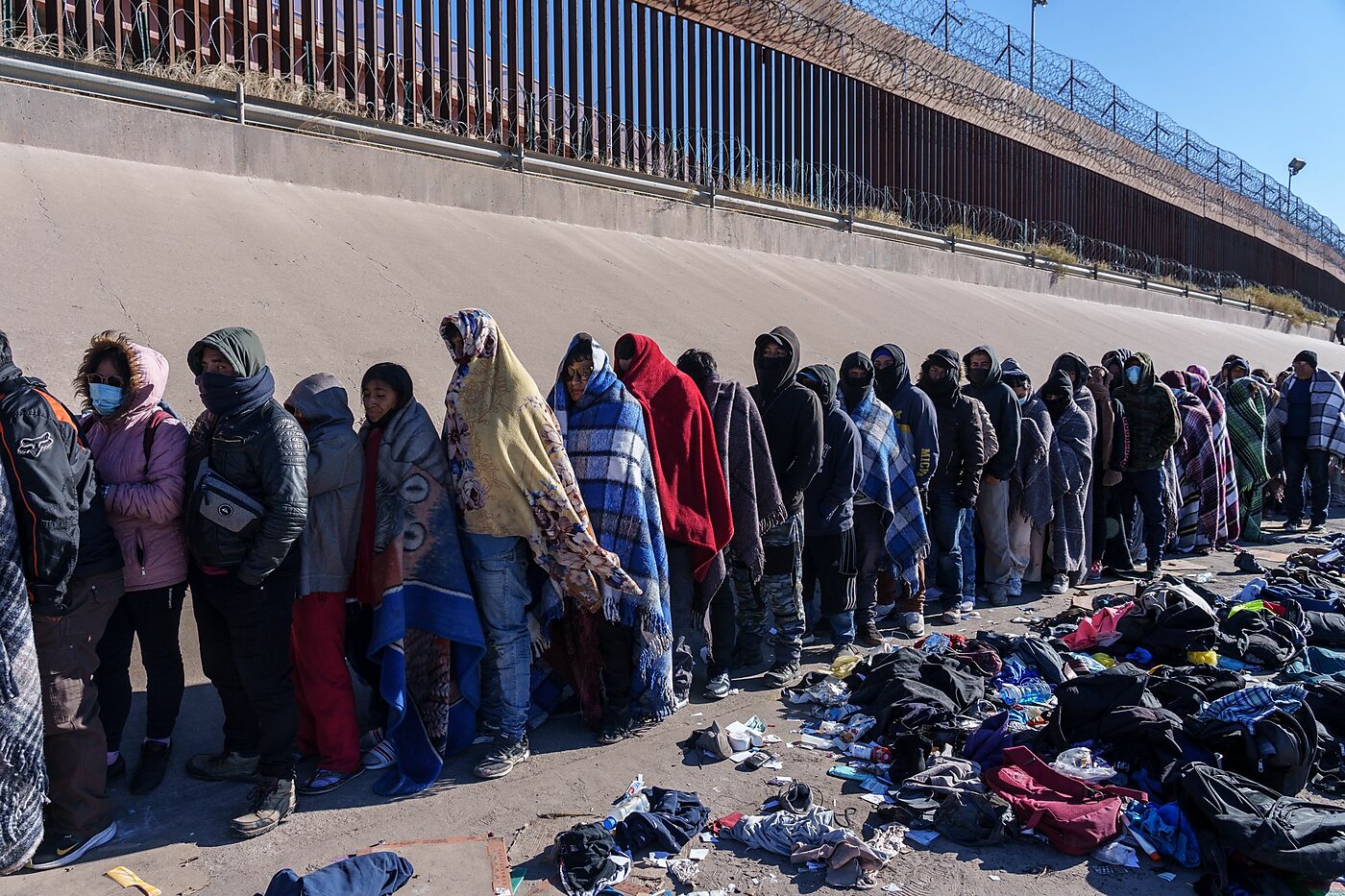Thousands of immigrants are crossing the U.S.-Mexico border to request asylum in the United States. These people are not trying to evade detection of the U.S. government. They are turning themselves in for processing. The Wall Street Journal described the scene this way:
On Wednesday morning, several hundred migrants waited on the U.S. side of the Rio Grande for a chance to surrender to waiting Border Patrol agents, the first step in what is likely to be a long legal process to apply for asylum. The migrants stood in a single-file line, many huddled under blankets to shield them from near-freezing temperatures. It was a scene that has been repeated daily since the weekend.
Why is lining up in a single file line to wait to be checked and evaluated by the U.S. government illegal? This sounds like any day at Ellis Island before Congress closed legal immigration to most of the world. So what’s the problem?
Under 8 U.S.C. § 1182(a)(6)(A)(i), immigrants are “inadmissible” to the United States, and they are criminally liable under 8 U.S.C. § 1325(a) if they enter the United States at a “place other than as designated” by the Secretary of the Department of Homeland Security (DHS). In other words, the only reason that these asylum seekers are considered illegal immigrants is that they have entered the country at a location not designated by Secretary of Homeland Security Alejandro Mayorkas.
DHS Secretary Mayorkas could simply designate the entire border as a valid place to cross, and these violations of the law would immediately disappear (so long as the people crossing did not try also to evade detection). More narrowly, he could just designate many of the usual places that immigrants are already crossing to turn themselves in as places that are legal to cross so long as they wait to be processed.
Doing this would not immediately grant asylum seekers any status in the United States, and they could still be deported immediately if they had no credible claim. But erasing the legal violation would remove numerous legal difficulties that asylum seekers face after they enter the country. They could not be sent to prison for entering the country. They would not be subject to any legal barrier to adjusting their status based on family or employer sponsorship.
Of course, this prospect raises the important question: why didn’t the immigrants already enter at one of the designated ports of entry? The answer is that the government refuses to allow nearly all of them to enter there. Even though the 8 U.S.C. § 1158 plainly authorizes people to apply for asylum at ports of entry (or between them!), the U.S. government is not following this law:
Any alien who is physically present in the United States or who arrives in the United States (whether or not at a designated port of arrival and including an alien who is brought to the United States after having been interdicted in international or United States waters), irrespective of such alien’s status, may apply for asylum.
It also works with the Mexico government to prevent people from reaching ports of entry to apply.
CBP has long claimed it lacked “capacity” to process people at the ports of entry, turning them away—which leads them to cross illegally. This capacity excuse is a pretext to ignore their legal right to asylum. But accepting this premise, if DHS knows that they will be crossing somewhere else when it turns them away at those border crossing points, DHS is causing illegal immigration. If DHS prefers to force them to cross somewhere away from other travelers, it should just designate specific places for asylum seekers to cross—eliminating the violation of the law.
As important as the legal implications are, the political implications are just as important. If these entries are legal, it removes the most significant rhetorical tool for opponents of immigration. DHS has the power to change the story about the border from one of chaos and illegality to one of orderliness and legality, and its refusal to do so leads to greater hostility to immigrants and feeds into misguided “invasion” narratives around immigration. DHS should stop blocking asylum seekers and create a process for legal entry to the United States.
Photograph by Paul Ratje for The Wall Street Journal

